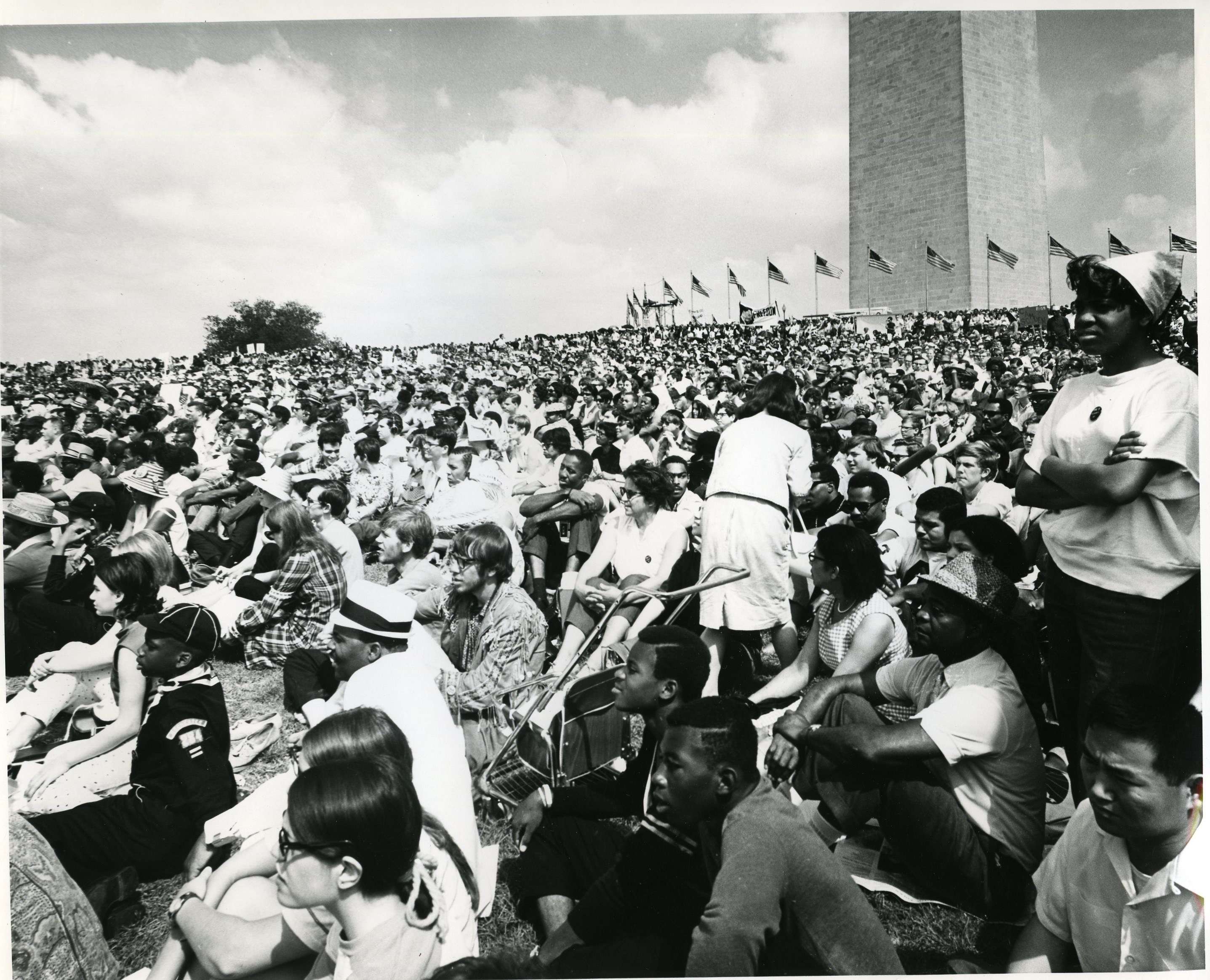Protesters From Resurrection City Outside the Washington Monument
6/1968
Add to Favorites:
Add all page(s) of this document to activity:

Resurrection City was built as part of the Poor People’s Campaign. In December 1967, the Southern Christian Leadership Conference (SCLC), under the leadership of Rev. Dr. Martin Luther King, Jr,. announced the campaign to bring attention to unemployment, affordable housing shortages, and poverty in America, regardless of race.
The SCLC wanted to use the media to force the Federal Government into passing legislation that would provide jobs and housing for the poor. They planned for a major demonstration in Washington, DC, on April 22, 1968, to kick off the campaign. Following Rev. Dr. Martin Luther King, Jr.'s assassination on April 4th, the campaign was led by Rev. Ralph Abernathy.
The Poor People’s Campaign included the construction of a temporary city, Resurrection City, where demonstrators would stay until their demands were met by Congress. By mid-May, nearly 5,000 people had relocated to the tent city on the National Mall. Donations, materials, and construction labor came from churches and schools. Several residents claimed that the housing was better than where they were currently residing.
Resurrection City lasted six weeks. There were challenges from the beginning: rain led to flooding, bugs, and muddy conditions; some residents didn't fully follow King’s vision of non-violent protest and confronted police and elected officials. Leaders of SCLC held one last public event on June 19, 1968, to reaffirm the original intention of Resurrection City. Over 50,000 people gathered at the Lincoln Memorial for Solidarity Day. Three days later, Resurrection City was shutdown.
The SCLC wanted to use the media to force the Federal Government into passing legislation that would provide jobs and housing for the poor. They planned for a major demonstration in Washington, DC, on April 22, 1968, to kick off the campaign. Following Rev. Dr. Martin Luther King, Jr.'s assassination on April 4th, the campaign was led by Rev. Ralph Abernathy.
The Poor People’s Campaign included the construction of a temporary city, Resurrection City, where demonstrators would stay until their demands were met by Congress. By mid-May, nearly 5,000 people had relocated to the tent city on the National Mall. Donations, materials, and construction labor came from churches and schools. Several residents claimed that the housing was better than where they were currently residing.
Resurrection City lasted six weeks. There were challenges from the beginning: rain led to flooding, bugs, and muddy conditions; some residents didn't fully follow King’s vision of non-violent protest and confronted police and elected officials. Leaders of SCLC held one last public event on June 19, 1968, to reaffirm the original intention of Resurrection City. Over 50,000 people gathered at the Lincoln Memorial for Solidarity Day. Three days later, Resurrection City was shutdown.
This primary source comes from the Records of the Office of the Secretary of the Interior.
National Archives Identifier: 516368
Full Citation: Photograph 48-RC-11014-46 ; Photograph of Resurrection City; 6/1968; Photographs of the "Resurrection City" Encampment During the Poor Peoples March on Washington, 5/1968 - 6/1968; Records of the Office of the Secretary of the Interior, Record Group 48; National Archives at College Park, College Park, MD. [Online Version, https://docsteach.org/documents/document/washington-monument-resurrection-city, April 27, 2024]Rights: Public Domain, Free of Known Copyright Restrictions. Learn more on our privacy and legal page.



